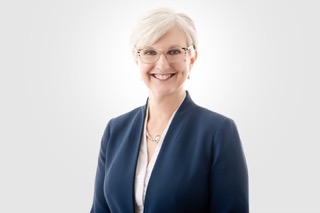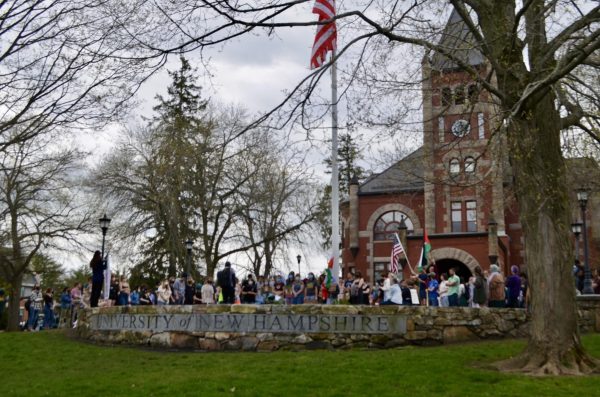Support grows for offshore wind development on Seacoast
May 7, 2021
With the Biden administration aiming to expand renewable energy projects along the East Coast, research from the University of New Hampshire (UNH) shows high support from coastal recreation visitors.
Recreation, which accounts for nearly $1.5 billion in annual economic impact for New Hampshire, remains an essential economic sector.
UNH found widespread support, with nearly 77% of coastal recreation visitors supporting offshore wind development (OWD) along the New Hampshire Seacoast.
“This study takes a closer look at the lingering assumption that offshore wind in the United States might hurt coastal recreation and tourism when in fact, we found the opposite,” said Michael Ferguson, assistant professor of recreation management and policy. “Our findings suggest that OWD will likely have little impact on coastal recreation and tourism, and in some instances, may even help amplify visitation.”
The study, which surveyed visitors at 18 different zones across the Seacoast, including beaches, marinas, boat launches, yacht clubs and angling locations, provided 50% of respondents with a simulation of the proposed development, while the other 50% did not view it.
Findings indicate that there was no impact on support whether or not the respondent viewed the simulation.
“Most of these coastal recreation visitors frequented the area, so these are people with strong ties to the N.H. Seacoast,” said Ferguson. “And, since OWD has had its hurdles gaining traction and acceptance in the United States, our findings suggest that coastal recreation visitors are open and supportive of it and policymakers, natural resource managers, and the OWD industry should recognize coastal recreation and tourism as critical stakeholder sectors.”
Despite widespread tourist support, Roger Stephenson, Northeast Regional advocacy director for the Climate & Energy program at the Union of Concerned Scientists, noted that OWD and the fishing industry must understand and accommodate one another in order to be successful.
“The devil is in the details, let’s talk about that,” said Stephenson. “There will be people… let’s call this a surf and turf story. The fishing industry needs to adopt a willing suspension of disbelief. We’ll need wind turbine operators to understand and work with fishermen. The turf are the people here in the state who will be faced with changes in the grid. There may be new grid related construction.”
Stephenson noted that due to climate change, the Rhode Island lobster industry has been kneecapped by ambivalent action on renewable energy.
“[Rhode Island] don’t have a lobster industry anymore, the waters are too warm. The fishermen are adapting to catching different kinds of fish and more squid,” said Stephenson. “They have to adapt, the ocean is changing, it has absorbed 90% of the heat from human-induced climate change.”
Maine, which is responsible for 90% of the nation’s lobster yield, has benefited from climate change for the past two decades.
In an interview with The New York Times, Dave Cousens, former president of the Maine Lobstermen’s Association outlined climate change’s impact on the state’s lobster industry.
“Climate change really helped us for the last 20 years,” said Cousens. “Climate change is going to kill us, in probably the next 30.”
A study conducted by the National Oceanic and Atmospheric Administration (NOAA) found that the Gulf of Maine is warming 99.9% faster than the rest of the planet’s oceans, and will continue to warm at an accelerated rate for the next 80 years.
Stephenson believes the benefits of off-shore wind development far outweigh the potential drawbacks.
“I think ecosystems are being harmed much, much more from the impacts of a changing climate than they would be from the infrastructure that comes with offshore wind,” said Stephenson.
Tom Burack, former commissioner of the New Hampshire Department of Environmental Services and current attorney and consultant with Sheehan Phinney in Manchester, echoed Stephenson’s urgency on OWD development.
“It’s becoming increasingly apparent that to achieve carbon free electricity [in New England] it will be [essential] to develop offshore wind projects,” said Burack. “The ultimate goal has to be to go completely renewable, but the matter is how long it will take to get there.”
New Hampshire’s State Climate Action Plan developed in 2008-2009 by the Climate Change Policy Task Force appointed by then-Gov. John Lynch aims to achieve the “greatest feasible reductions in greenhouse gas emissions while also providing the greatest possible long-term economic benefits to New Hampshire,” according to the plan.
Developed under Burack’s leadership, the plan recommends that New Hampshire reduce its emissions to 80% below 1990 levels by 2050 and achieve a mid-term goal of 20% below 1990 levels by 2025
Currently, the plan’s mid-term and long-term goals are aspirational , and is not legally binding. In February, the New Hampshire House of Representatives considered proposed legislation to codify the Climate Action Plan’s goals into law, with a target of net-zero emissions by 2050, but the bill did not advance.
Nevertheless, Burack sees cause for optimism if new renewable sources of electricity can help meet current demand levels while also servicing a transition to electric vehicles and more electric heating of homes and buildings.
“The bottom line here is the future is very bright. We have so much to look forward to because we see that [with offshore wind and other renewables] there are ways for us to both address climate change and strengthen our economy, create new jobs and [at the same time continue to] protect [and enjoy] the natural resources here in New Hampshire that we all cherish,” said Burack.




























